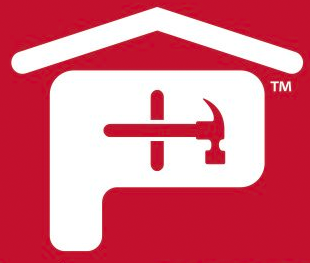Structures are designed and built using different methods and are subject to a variety of tests depending on codes such as the International Residential Code (IRC), International Energy Conservation Code (IECC), International Building Code (IBC), and other major building code bodies. The codes specify requirements for design, construction and performance as well as individual product requirements to safeguard against failures, such as structural collapse or potential fire hazard.
One of the key factors in the case of the fire hazard of assembly materials is the potential for rapid wind-aided flame spread over the surface. For this reason, reaction-to-fire requirements for building materials in U.S. building codes are primarily based on performance in a wind-aided flame spread test.

The ASTM E84 test provides measurements of "surface flame spread and smoke density measurements with that of select grade red oak and fiber-cement board surfaces."
One such test is the ASTM E84 Standard Test Method for Surface Burning Characteristics of Building Materials. The purpose of the test is to determine comparative measurements of the relative burning behavior of the material by observing the flame spread along the specimen (material) with that of a select grade red oak. Flame spread and smoke developed index are reported on from the test.
ASTM E84 characterizes the relative rate at which flame will spread as the subject material burns. This test method is often referred to as the “Tunnel Test” because the test chamber is a nominal 24-foot-long by 20-inch wide chamber. The test is conducted with the specimen in the ceiling position with the surface to be evaluated exposed face down to the ignition source. The gas burners are lit at one end of the chamber and a draft is applied to facilitate flame propagation along the specimen. A photometer and light source are placed at the exhaust end of the chamber to measure the relative amount of smoke that is developed during the test. The test is run for 10 minutes and the distance the flame propagates during that time is measured and used to compare to a red oak standard. Both the distance of flame spread and the time-rate of flame spread are considered when calculating a flame spread index.
In basic terms, a reported flame spread index of 25 or less indicates that when compared to the benchmark flame spread index of 0 for fiber cement board, and 100 for red oak, the tested products flame spread index is less than 25. The “smoke developed index” is calculated similarly. Section 803.1.1 of the International Building Code defines three classes of materials based on ASTM E84 test results.
| Flame Spread Index | Smoke Developed Index | |
| Class A | 0 - 25 | 0 - 450 |
| Class B | 26 - 75 | 0 - 450 |
| Class C | 76 - 200 | 0 - 450 |
A combustible building material is required to conform to the Class A requirements to be used in a noncombustible wall assembly.
This standard should be used to measure and describe the properties of materials, products, or assemblies in response to heat and flame under controlled laboratory conditions. It should not be used to describe, or appraise the fire hazard or fire risk of materials, products, or assemblies under actual fire conditions. However, results of this test may be considered in a fire risk assessment that takes into account all of the factors that are pertinent to an assessment of the fire hazard of a particular end use.
There are several other factors to consider when specifying products to be used in wall assemblies that the test does not take into account or provide a measurement.
- Heat transfer through the tested surfaces.
- The effect of aggravated flame spread behavior of an assembly resulting from the proximity of combustible walls and ceilings.
- Classifying or defining a material as noncombustible, by means of a flame spread index by itself.
ASTM E84 is only one of several testing standards for fire behavior. Depending on the type of construction and other building materials being used other testing standards such as NFPA 285, 286 and 255 may be required. But we will leave those tests for another discussion.



 Gear!
Gear! PRO LOGIN
PRO LOGIN